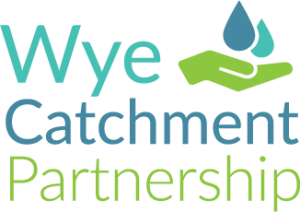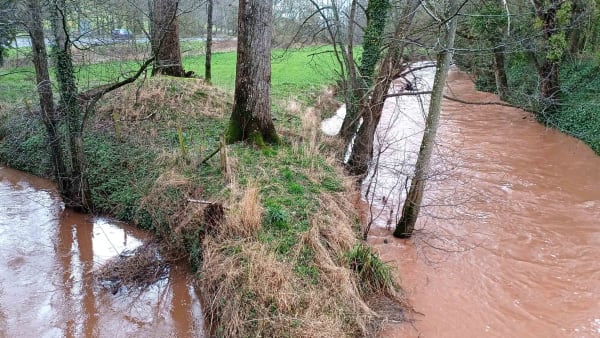The £99,985 DIME project is being led by Foundation in partnership with Nature Finance and the Rivers Trust with their financial and commercial advisory skills.
The project is setting up a natural capital trading “Special Purposes Vehicle” (SPV), using the portfolio of evidence and engagement provided by the Foundation and farmers.
Once established, the SPV and ecosystem service contract structures, as the culmination of a legal and evidence-based framework development process, can be rolled out across the whole of the Wye and the Usk catchments.
It will be a powerful tool for the delivery of the Wye Nutrient Management Plan and the Wye Catchment Partnership’s efforts to correct the problems on the Wye. The knowledge acquired from the DIME project and the other three catchment-based pilot projects is being shared across the river trust network and wider to support the transition into larger scale environmental projects.
The nature-based investment approach is strongly supported by Government policy through the 25 Year Plan, Environment Bill and other initiatives such as the UK’s new carbon Emissions Trading Platform.
The project is working on the English headwaters of the river Monnow, namely the sub catchments of the Dulas, Dore and Worm.
The total project area is 123km2 of which we have engaged landholdings totalling 98km2.
The problem
 The Monnow catchment suffers from significant flooding and water quality issues which impact adversely on local communities, businesses and future development. The catchment has been subject to an increasing frequency of damaging floods in recent years with property and infrastructure being inundated on 26/10/19, 08/02/20, 16/02/20, 19/12/20, 8/02/21 and 20/02/2021. The return period has changed from 8 years to < 6months as late winter soil compaction and panning has exacerbated the effect of intense rainfall in the late winter.
The Monnow catchment suffers from significant flooding and water quality issues which impact adversely on local communities, businesses and future development. The catchment has been subject to an increasing frequency of damaging floods in recent years with property and infrastructure being inundated on 26/10/19, 08/02/20, 16/02/20, 19/12/20, 8/02/21 and 20/02/2021. The return period has changed from 8 years to < 6months as late winter soil compaction and panning has exacerbated the effect of intense rainfall in the late winter.
The large village of Ewyas Harold is particularly at risk of flooding, located close to the Dulas Brook, and having most recently severely flooded following Storm Dennis in February 2020.
In terms of overall flood risk profile, 21 properties in Ewyas Harold are at risk of flooding in a “1 in 100”-year flood event (1% probability in any one year). Furthermore, crucial infrastructure including the A465 between Pontrilas and Ewyas Harold and the main train line between Abergavenny and Hereford are at risk of flooding during large storm events, most recently submerged by Storm Dennis floodwater in February 2020. The devastating impacts of flood events have severe social and economic costs to local authorities, businesses and affected communities.
The solution
After modelling how floods are generated and how much each tributaries discharge contributes to the flood peak we are working with the farmers to assess soil condition, overland flow lines and identify opportunities within the project area for investors to invest with evidential, legal and financial certainty to provide improved regulatory and provisioning ecosystem services.
Investors affected by similar issues will be able to join together in certainty and so reduce individual costs.
| What the project is doing | Benefits | Measures | Investors |
| Mapping and quantifying flows lines, infiltration rates and stores of water during high flow events | Increased understanding of flood generation | Mapping and observation during high rainfall events Soils assessments Rotation assessment | |
| Working with landowners to develop NFM packages with quantified benefit. | Xm3 delayed for yhrs at Q1 or greater discharge events Reduced soil loss | Increased infiltration into soils. High rainfall event storage Leaky dams on ephemeral/1st order stream Off and on-line ponds Re meandering straighten sections
| Statutory Bodies Council Insurers Housing developers Riparian owners Highways Network rail Water Company |
| Working with landowners to develop nutrient reduction programmes | Reducing loading of Phosphorus and risk of pesticide pollution | On farm wetlands Legacy P drawdown Reduced Nutrient applications | Statutory Bodies Housing developers Water Company |
| Working with council and other NEIRF projects to develop biodiversity net gain | Restoration and enhancement of biodiversity | BNG Calculation Natural Capital metrics | Council Housing developers Business |
| Working with landowners to develop opportunities to retain water to increase low flows | Reduced risk of drought Increased flows at Q95 or lower | Increase soil infiltration Off line ponds and other water storage | Abstractors Riparian owners |
| Working with landowners to develop opportunities to sequester carbon in soil, wetlands and trees. | Mitigate climate change | Reduced tillage/increased cover crops Mob grazing Wetland construction Tree planting
| Business Private individuals
|
| Increase access to the land for the public | Improved wellbeing and health | Improve access, Maintain footpaths Increase opportunities | Health boards Council |



